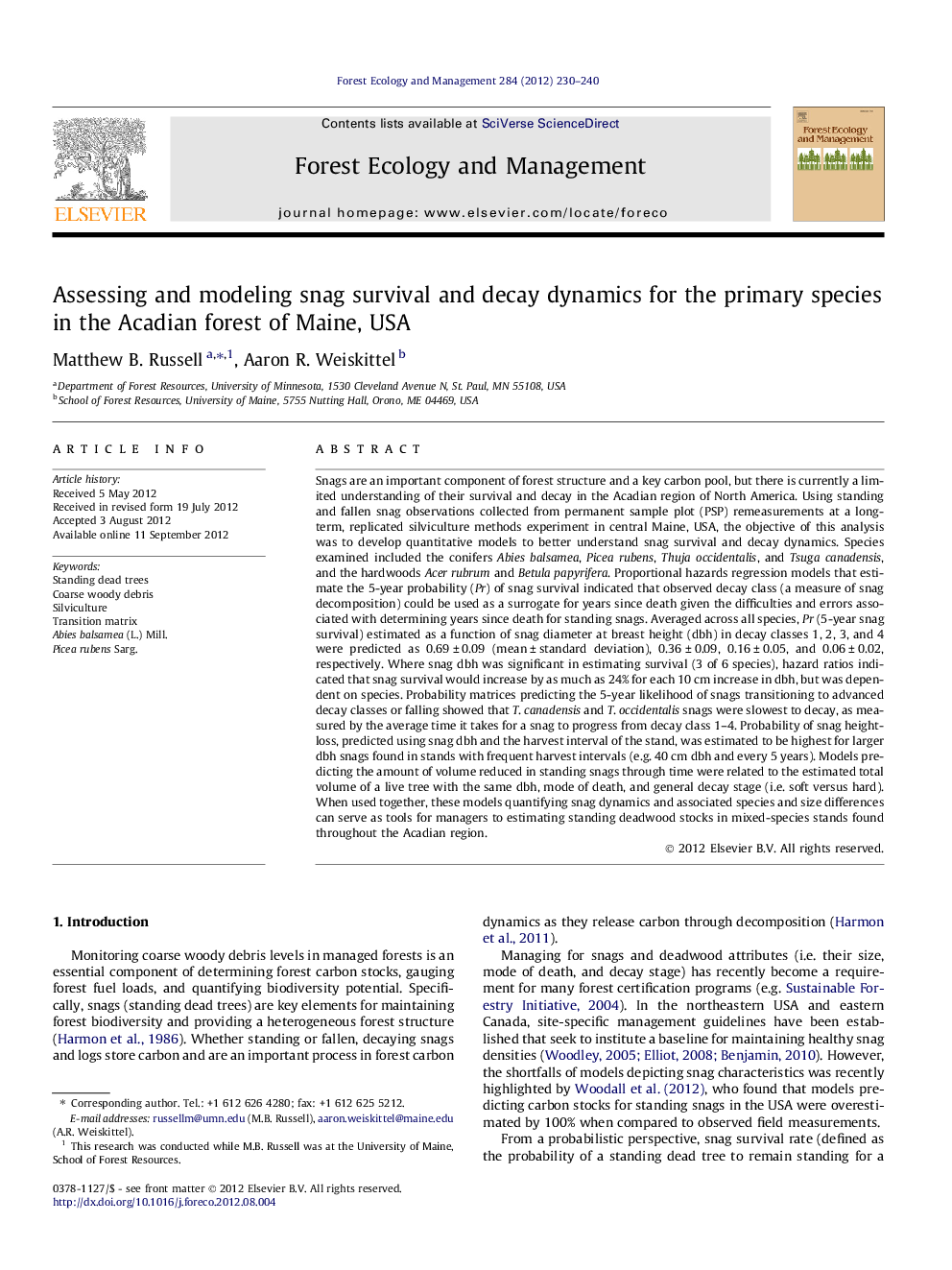| کد مقاله | کد نشریه | سال انتشار | مقاله انگلیسی | نسخه تمام متن |
|---|---|---|---|---|
| 87283 | 159242 | 2012 | 11 صفحه PDF | دانلود رایگان |

Snags are an important component of forest structure and a key carbon pool, but there is currently a limited understanding of their survival and decay in the Acadian region of North America. Using standing and fallen snag observations collected from permanent sample plot (PSP) remeasurements at a long-term, replicated silviculture methods experiment in central Maine, USA, the objective of this analysis was to develop quantitative models to better understand snag survival and decay dynamics. Species examined included the conifers Abies balsamea, Picea rubens, Thuja occidentalis, and Tsuga canadensis, and the hardwoods Acer rubrum and Betula papyrifera. Proportional hazards regression models that estimate the 5-year probability (Pr) of snag survival indicated that observed decay class (a measure of snag decomposition) could be used as a surrogate for years since death given the difficulties and errors associated with determining years since death for standing snags. Averaged across all species, Pr (5-year snag survival) estimated as a function of snag diameter at breast height (dbh) in decay classes 1, 2, 3, and 4 were predicted as 0.69 ± 0.09 (mean ± standard deviation), 0.36 ± 0.09, 0.16 ± 0.05, and 0.06 ± 0.02, respectively. Where snag dbh was significant in estimating survival (3 of 6 species), hazard ratios indicated that snag survival would increase by as much as 24% for each 10 cm increase in dbh, but was dependent on species. Probability matrices predicting the 5-year likelihood of snags transitioning to advanced decay classes or falling showed that T. canadensis and T. occidentalis snags were slowest to decay, as measured by the average time it takes for a snag to progress from decay class 1–4. Probability of snag height-loss, predicted using snag dbh and the harvest interval of the stand, was estimated to be highest for larger dbh snags found in stands with frequent harvest intervals (e.g. 40 cm dbh and every 5 years). Models predicting the amount of volume reduced in standing snags through time were related to the estimated total volume of a live tree with the same dbh, mode of death, and general decay stage (i.e. soft versus hard). When used together, these models quantifying snag dynamics and associated species and size differences can serve as tools for managers to estimating standing deadwood stocks in mixed-species stands found throughout the Acadian region.
► Snag measurements were collected from a long-term silvicultural experiment in central Maine, USA.
► Models showed that snag decay class could be used instead of years since death to estimate snag survival.
► Tsuga canadensis and Thuja occidentalis snags were slowest to decay.
► Models predicting volume reduction in snags were related to diameter, mode of tree death, and stage of decay.
Journal: Forest Ecology and Management - Volume 284, 15 November 2012, Pages 230–240